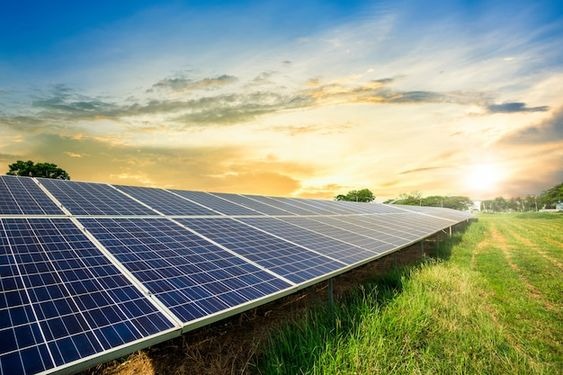Unlocking Energy Independence with Hybrid Inverters: A Comprehensive Guide
In the realm of renewable energy, hybrid inverters stand out as versatile and innovative solutions that bridge the gap between solar power, energy storage, and grid connectivity. These advanced devices not only convert direct current (DC) electricity from solar panels into usable alternating current (AC) for homes and businesses but also manage energy flows intelligently, integrating with battery storage systems. Let's delve into what hybrid inverters are, how they work, and their transformative impact on the quest for energy independence and sustainability

Understanding Hybrid Inverters What Sets Them Apart?
Hybrid inverters, also known as multi-mode inverters, are designed to handle multiple sources of energy inputs and outputs. Unlike traditional on-grid inverters that only synchronize with the utility grid, hybrid inverters are capable of managing solar energy generation, battery storage, and grid connectivity simultaneously. This versatility allows homeowners and businesses to optimize energy usage, maximize self-consumption of solar power, and enhance energy resilience.
How Hybrid Inverters Work The Integration of Solar and StorageThe functionality of hybrid inverters can be summarized into several key operations:
1. Solar Energy ConversionSimilar to on-grid inverters, hybrid inverters convert DC electricity generated by solar panels into AC electricity suitable for powering household appliances or feeding into the grid.
2. Battery Charging and DischargingHybrid inverters are equipped with charge controllers that manage the charging and discharging of battery storage systems. During periods of excess solar generation or low electricity demand, surplus energy can be stored in batteries for use during peak consumption times or when solar generation is insufficient.
Hybrid inverters can operate in grid-tied mode, where they synchronize with the utility grid to export excess electricity or draw electricity when solar generation is insufficient. They can also operate in off-grid mode, enabling standalone operation during grid outages or in remote areas without reliable grid access.
4. Intelligent Energy ManagementAdvanced hybrid inverters incorporate smart energy management systems that prioritize energy sources based on factors such as energy prices, grid stability, and user preferences. This optimization helps maximize energy efficiency and cost savings over time.
Benefits of Hybrid Inverters
The adoption of hybrid inverters offers numerous benefits for homeowners, businesses, and the environment
1. Energy IndependenceBy combining solar power generation with battery storage and grid connectivity, hybrid inverters empower consumers to reduce reliance on grid-supplied electricity. This independence is particularly valuable during grid outages or in regions with unreliable grid infrastructure.
2. Maximized Self-ConsumptionHybrid inverters enable users to maximize self-consumption of solar energy by storing surplus electricity in batteries for use during peak demand periods or at night. This reduces reliance on grid electricity and enhances the financial returns of solar investments.
3. Backup Power CapabilityIn regions prone to power outages or natural disasters, hybrid inverters equipped with battery storage provide reliable backup power. This capability ensures continuous electricity supply for critical loads such as refrigeration, lighting, and communication devices.
4. Environmental SustainabilityBy harnessing solar energy and optimizing energy usage, hybrid inverters contribute to reducing greenhouse gas emissions and mitigating environmental impact associated with fossil fuel-based electricity generation.
3. Financial SavingsWhile the initial investment in hybrid inverters and battery storage systems can be significant, the long-term savings on electricity bills, reduced maintenance costs, and potential incentives or rebates offered by governments contribute to a favorable return on investment (ROI) over the system's lifespan.
Considerations and Future Trends
Despite their advantages, hybrid inverters come with considerations that potential adopters should keep in mind.
1. System Design and SizingProper system design and sizing are critical for optimizing the performance and efficiency of hybrid solar systems. Factors such as solar panel capacity, battery storage capacity, household energy consumption patterns, and local climate conditions must be carefully evaluated during installation.
2. Lifecycle CostsWhile hybrid inverters offer financial savings over time, it's essential to consider the lifecycle costs associated with maintenance, battery replacement, and system upgrades to ensure continued reliability and performance.
2. Technological AdvancementsOngoing advancements in hybrid inverter technology, energy storage solutions, and smart grid integration are driving innovation in the renewable energy sector. Future trends may include improved efficiency, scalability, and interoperability with emerging energy technologies.
In conclusion, hybrid inverters represent a pivotal advancement in renewable energy technology, offering a pathway towards energy independence, sustainability, and resilience. By seamlessly integrating solar power generation, battery storage, and grid connectivity, hybrid inverters empower individuals and communities to take control of their energy futures while reducing environmental impact. Whether you're considering adopting solar energy or exploring ways to enhance energy resilience, hybrid inverters stand as a testament to the transformative potential of clean, renewable energy solutions. Embracing hybrid inverters is not just a step towards energy efficiency—it's a stride towards a more sustainable and empowered future.